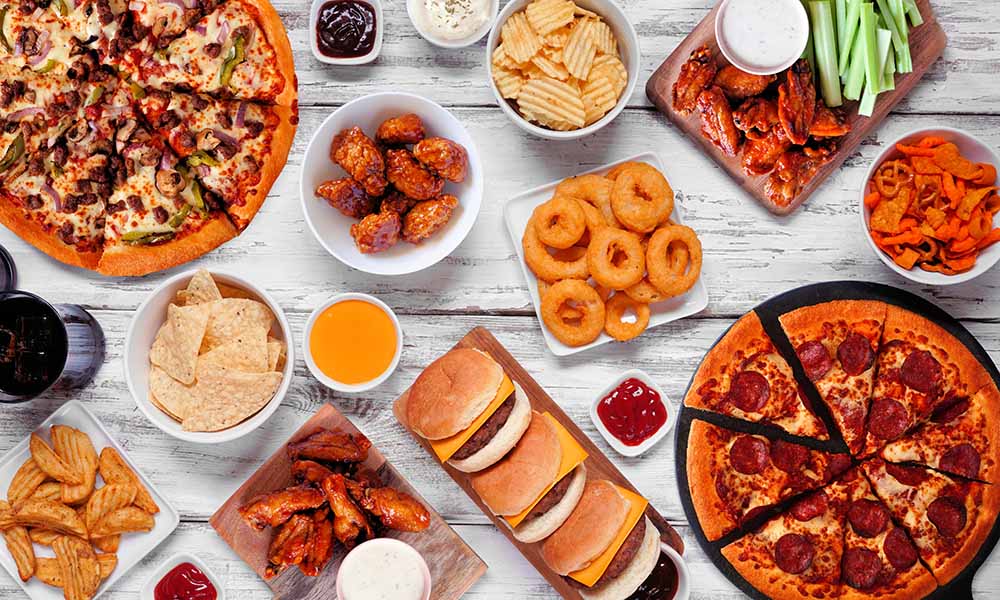Normal Glucose Levels After Eating

Overview
Normal glucose levels after eating vary significantly between individuals with and without diabetes. While non-diabetic people typically maintain levels between 70 to 80 mg/dL before meals and up to 140 mg/dL two hours after eating, those with diabetes aim for different targets.
For people with diabetes mellitus, blood sugar levels should stay between 70 to 130 mg/dL before meals and remain under 180 mg/dL after eating. These post-meal sugar levels usually peak within an hour of eating and should return to normal within two hours.
Let's explore the essential aspects of blood sugar management after meals, including target ranges for different groups, factors affecting glucose levels, and practical monitoring strategies. Understanding these levels is crucial, as consistently high blood glucose can result in serious health issues, including cardiovascular disease, nerve damage, and renal problems.
What Are Normal Blood Sugar Levels After Eating?
Blood glucose measurements vary based on several factors, specifically age and timing of meals. The American Diabetes Association provides guidelines for optimal blood sugar ranges after eating:
For adults under 50 years, blood sugar should remain below 140 mg/dL two hours after a meal. Subsequently, the target increases slightly with age - adults between 50-60 years should maintain levels below 150 mg/dL, whilst those over 60 years may have levels up to 160 mg/dL.
Different age groups require distinct target ranges:
Children under 6 years: 100-180 mg/dL before meals, up to 180 mg/dL after eating
Ages 6-12 years: 90-180 mg/dL before meals, up to 140 mg/dL post-meal
Teenagers (13-19 years): 90-130 mg/dL before meals, up to 140 mg/dL after eating
Adults over 20 years: 70-130 mg/dL before meals, below 180 mg/dL post-meal
Pregnant women with diabetes need stricter control, aiming for 95 mg/dL or less before meals. Additionally, their levels should stay below 140 mg/dL one hour after eating and under 120 mg/dL two hours post-meal.
Most people's blood sugar levels peak within the first hour after eating and should return to pre-meal levels within two hours. These targets may need adjustment based on individual health conditions and medical advice.
How Does Food Affect Blood Sugar Levels After Eating?

The gastrointestinal tract breaks down carbohydrates into glucose, which enters the bloodstream. Initially, when food enters the digestive system, the pancreas secretes insulin to help cells absorb blood sugar for energy or storage.
Different foods affect blood sugar levels in distinct ways. The glycemic index (GI) measures how quickly foods raise blood glucose compared to pure glucose. Foods with high GI values cause rapid blood sugar increases, whereas low GI foods lead to gradual rises. Furthermore, processed foods typically have higher GI values, whilst foods rich in fat or fibre tend to show lower GI measurements.
The order of food consumption plays a crucial role in blood sugar management. Research shows that eating vegetables and protein before carbohydrates reduces post-meal glucose levels by 28.6% after 30 minutes and 36.7% after 60 minutes. Moreover, this eating pattern decreases insulin levels significantly.
Several factors influence how food affects blood sugar:
Processing Methods - refined grains raise blood sugar faster than whole grains
Physical Form - finely ground foods digest more rapidly than coarse ones
Fibre Content - high-fibre foods slow digestion and glucose absorption
Fat and Acid Content - these components delay sugar conversion
Consequently, maintaining balanced blood sugar levels requires understanding the type and quantity of food consumed. The total amount of carbohydrates remains the primary predictor of glycemic response. This knowledge helps prevent sudden spikes in blood sugar levels and supports better overall health management.
Blood Sugar Levels After Eating for Diabetics vs. Non-Diabetics
Post-meal blood sugar measurements differ markedly between people with and without diabetes. For non-diabetic adults, blood sugar typically ranges from 80 to 140 mg/dL after meals. These levels usually return to baseline within two hours of eating.
People with type 1 or type 2 diabetes maintain higher post-meal ranges, with targets staying below 180 mg/dL. The measurement timing proves crucial - blood sugar readings should be taken 1-2 hours after starting a meal, representing peak levels.
Distinct target ranges exist for specific groups:
Pregnant women with pre-existing diabetes: 100 to 129 mg/dL after meals
Women with gestational diabetes: Less than 120 mg/dL post-meal
Children with type 1 diabetes: 90 to 160 mg/dL after eating
Adults with type 2 diabetes: Less than 180 mg/dL following meals
Particularly for individuals with diabetes, post-meal glucose peaks occur between 45 minutes to 1 hour after eating. The absorption period spans approximately 4 hours, although insulin response typically reduces levels within 2 hours.
Blood sugar control varies based on diabetes management. For those with well-controlled diabetes (A1C <7.3%), post-meal glucose contributes about 70% to overall blood sugar levels. Alternatively, individuals with poorly controlled diabetes (A1C ≥9.3%) experience more significant impacts from fasting blood sugar levels rather than post-meal readings.
Factors That Influence Blood Sugar After Eating
Several biological and lifestyle factors shape how the body processes glucose after meals.
Stress: Long-term stress plays a significant role in blood sugar management. The body releases cortisol and adrenaline during stressful periods, which can lead to insulin resistance and elevated blood sugar levels.
Physical Activity: Exercise timing proves crucial for managing post-meal glucose levels. Physical activity started 45 minutes after eating coincides with peak blood glucose and proves most effective at reducing sugar levels. Nevertheless, even light walking immediately after meals helps lower blood glucose concentrations.
Meal Composition: The ratio of carbohydrates to proteins and fats affects glucose absorption rates
Sleep Quality: Poor sleep reduces insulin sensitivity, leading to higher post-meal blood sugar responses
Hormonal Changes: Women experience varying glucose responses during menstruation and menopause due to hormonal fluctuations
Hydration Status: Lower water intake results in higher blood sugar concentrations
Understanding these factors helps maintain optimal glucose levels through the proper timing of meals, exercise, and stress management techniques.
How to Monitor and Control Sugar Levels After Eating
Maintaining optimal blood sugar levels requires consistent monitoring and strategic control measures. Blood sugar testing provides crucial information about how daily activities affect glucose levels, primarily helping manage diabetes effectively.
Testing blood sugar before meals helps plan appropriate food portions, guiding insulin dosing decisions. For optimal monitoring, checking levels two hours after starting a meal reveals how food affects blood sugar and whether medication adjustments are needed.
Effective control strategies include:
Eating protein-rich foods with carbohydrates to slow glucose absorption
Filling half the plate with vegetables and consuming them first during meals
Consuming whole grains and healthy fats to stabilise blood sugar levels
Staying well-hydrated throughout the day
Getting adequate sleep to maintain energy levels
Exercise plays a key role in blood sugar management. Physical activity simultaneously boosts metabolism and improves the body's ability to process sugars. Undeniably, even a 15-minute walk after meals can significantly improve glycemic control over 24 hours.
Food order during meals forthwith impacts glucose levels. Research demonstrates that consuming vegetables and proteins before carbohydrates reduces post-meal glucose excursions. This approach proves comparable to the effects of certain diabetes medications in controlling blood sugar levels.
Professional guidance remains essential for developing an effective monitoring plan. Doctors can help determine the appropriate testing frequency and target ranges based on individual health conditions and treatment goals.
Symptoms of High or Low Blood Sugar After a Meal
Recognising changes in blood sugar levels primarily depends on understanding their distinct symptoms. The body sends clear signals when glucose levels rise above or fall below normal ranges after meals.
High blood sugar symptoms typically appear when levels exceed 180-200 mg/dL. The initial signs include:
Increased thirst and frequent urination
Headaches and blurred vision
Fatigue and dry mouth
Small cuts that heal slowly
Frequent infections
Unexplained weight loss
Low blood sugar symptoms manifest within 4 hours after eating. These signs encompass:
Anxiety and confusion
Racing heart and dizziness
Light-headedness and sweating
Extreme tiredness
Shakiness and weakness
Low blood sugar symptoms typically subside quickly after consuming carbohydrates. However, if left untreated, both high and low blood sugar can cause severe complications, including loss of consciousness, confusion, and, in extreme cases, coma.
Conclusion
Blood sugar management requires careful attention to several key factors. People without diabetes typically maintain levels between 70-140 mg/dL after meals, while those with diabetes aim to stay below 180 mg/dL. The body usually takes about two hours to return blood sugar to normal levels after eating.
Understanding personal glucose responses helps prevent complications. Food choices, meal timing, and exercise are essential in maintaining healthy blood sugar levels. Simple steps like eating vegetables before carbohydrates and taking short walks after meals can make a big difference in glucose control.
Regular monitoring remains vital for anyone concerned about blood sugar levels. People should watch for warning signs of both high and low blood sugar, as these symptoms signal the need for immediate action. Speaking with doctors helps determine personal target ranges and create effective management strategies.
FAQs
When should I test my blood sugar after eating?
Most individuals need to check their levels 2-4 times daily. Testing proves most effective before meals and 1-2 hours after eating.
Do I need to fast before checking my blood sugar?
One should avoid food for at least 10 hours, primarily for fasting glucose tests. Plain water remains the only permitted drink during this time.
What causes morning blood sugar to be higher?
The dawn phenomenon, a natural surge of hormones that helps with waking up, generally causes higher morning glucose readings. Daily activities typically help maintain better control throughout the day.
Can stress affect my blood sugar readings?
Indeed, stress acts as a significant factor in blood sugar control. The body releases cortisol during stressful periods, which can raise glucose levels.
Does illness impact blood sugar levels?
Being unwell can increase blood sugar readings. The key focus during illness should be maintaining stable glucose levels to prevent minor health issues from causing bigger problems.
What foods help lower blood sugar?
The best options include:
High-fibre foods
Vegetables and legumes
Fish
Foods with low glycemic index
Water-rich foods
Can weather affect blood sugar levels?
Both hot and cold temperatures influence blood sugar. High heat leads to dehydration, which increases glucose concentration. The vascular system changes in extreme temperatures also affect blood sugar readings.


